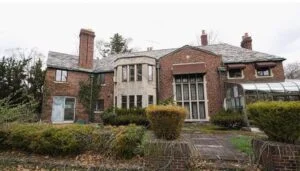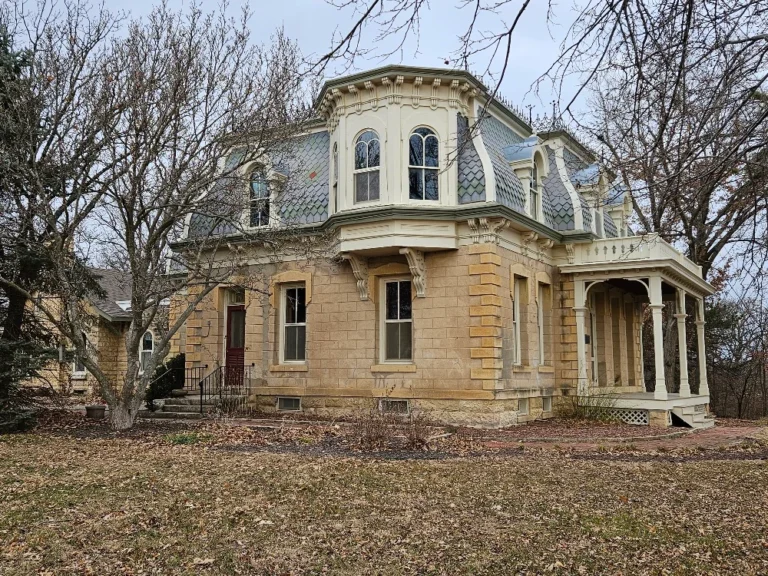The Queen’s Last Castle: Aretha Franklin’s Final Detroit Residence
In the heart of Detroit, just steps away from the tree-lined paths of the prestigious Detroit Golf Club, stands a home of quiet power and significance.
A Tudor-style brick mansion built in 1927, the residence sits not only as a relic of a different architectural era but as one of the last tangible links to a towering cultural icon: Aretha Franklin.
For decades, this home was a sanctuary to the Queen of Soul — a private, serene space where the noise of the outside world faded behind heavy oak doors and leaded glass windows.
Long before the resurgence of attention that followed her passing in 2018, the house was a cornerstone of her life in the Motor City, one of several properties she owned during her storied career, but the last one in Detroit to remain in her estate’s possession.

Today, the house has passed into new hands, marking the end of an era and the beginning of another. Yet its walls still whisper stories — of music, family, and a singular woman whose voice helped define American music.
A Home of Distinction
Constructed nearly a century ago, the home was built in a time when Detroit was booming — flush with auto-industry wealth and cultural ambition.
Designed in the Tudor Revival style, the house features a slate roof, tall chimneys, and classic timber detailing that speaks of a period when craftsmanship was king.
Inside, the home boasts over 5,000 square feet of living space, with expansive rooms, detailed woodwork, arched doorways, and a grand staircase.
Intricate moldings wrap around ceilings and walls, and original hardwood floors run through formal living and dining rooms. A large solarium stretches along one side of the house, welcoming streams of morning light.
It’s easy to imagine Aretha herself moving through these spaces — walking barefoot through the morning sunroom, rehearsing lines of lyrics in the music room, or welcoming guests for one of the many private gatherings she was known to host.
Aretha and the Rose Estate
Aretha Franklin purchased the property in the early 1990s, at a time when she was experiencing a renewed wave of musical relevance.
Though she had achieved superstardom decades earlier, the 1990s saw her recording new hits and collaborating with younger artists. During this era, this Detroit home became her base — the place she returned to when not touring or recording.
The property gained a quiet nickname among some fans and locals: “The Rose Estate,” a nod to her 1998 hit album A Rose Is Still a Rose. It’s unclear whether Franklin herself used that term, but it seems fitting. Much like a rose, the home is elegant, resilient, and rooted in deep soil.
Though she later spent more time in other homes, including properties in Bloomfield Hills and outside of Michigan, the Detroit house remained in her possession until her death. It was the kind of place that anchored her to the city where her story began.
More Than Just a Home
For Aretha, Detroit wasn’t just where she lived — it was where she belonged. Born in Memphis, Tennessee, she moved to Detroit as a young child.
Her father, the renowned preacher Rev. C.L. Franklin, served as pastor at New Bethel Baptist Church, where Aretha first sang publicly.
The city’s deep soul, rich gospel roots, and turbulent civil rights history shaped the young artist in profound ways.
Owning a home in the heart of Detroit was more than just a real estate decision — it was an act of connection and loyalty.
The mansion became a quiet monument to her bond with the city. Even as Detroit faced economic decline and widespread disinvestment, Aretha held onto her place there. She never abandoned it, and perhaps that speaks volumes about her sense of identity and belonging.
Years of Decline
Following her passing in 2018, the home sat mostly empty. Without Franklin’s presence, the structure began to deteriorate.
Weather damage, a leaking roof, broken windows, and wildlife intrusion took their toll. Vandals and scavengers, always quick to act when prominent properties are unoccupied, left signs of entry.
Despite its history and architecture, the mansion faced an uncertain future. It was no longer just a fixer-upper — it was at risk of becoming one of many grand Detroit homes lost to time.
A New Chapter: Restoration and Legacy
In a surprising and heartening twist, the property was eventually purchased by new owners committed to its preservation. Rather than gutting it or subdividing the lot, they chose the harder path — full restoration.
This meant replacing the original slate roof tile by tile, reinforcing the old wood beams, rewiring every room, and carefully salvaging what was left of the original detailing.
Old doors were re-hung, gold-tone fixtures that Franklin herself had chosen were polished and reinstalled, and the garden was painstakingly revived.
The new caretakers of the house envisioned it not just as a home, but as a living tribute. Their goal was to preserve the spirit of the place, while honoring its connection to one of America’s most revered artists.
They opened the space occasionally for tours and community events, allowing people to experience the atmosphere, learn about the restoration process, and walk the same halls that Franklin once did.
Plans are even in place to seek historic landmark status for the home — a recognition that would ensure future generations understand its significance.
Echoes of a Voice
Standing in the entryway of the house today, one might feel a subtle sense of reverence. The air is quiet, but not empty. There’s something about the energy of the place — as if Franklin’s music still lingers, echoing softly through the high ceilings and stairwells.
Her legacy, of course, extends far beyond any one building. Aretha Franklin’s impact lives in every record she made, every performance she gave, and every heart she touched. But spaces like this one — where she laughed, cried, cooked, and created — are rare and sacred.
They remind us that legends are people, too. They walk floors, open doors, sip coffee, and sit quietly by windows. This house bears the fingerprints of a life lived fully, with grace and with fire.
Preservation as Resistance
In many cities, the homes of Black artists, activists, and cultural icons are often lost — neglected, demolished, or turned into generic development projects. To restore a home like Aretha Franklin’s, and to do so with intention, is a powerful act of cultural preservation.
It says that history matters. That beauty matters. That stories don’t only live in books and records — they live in bricks and beams, in spaces shaped by human presence.
The revival of this Detroit home isn’t just about one woman’s legacy. It’s about reclaiming space, telling stories that need to be told, and giving the next generation something tangible to hold onto. In that sense, it’s an act of resistance, memory, and hope.





